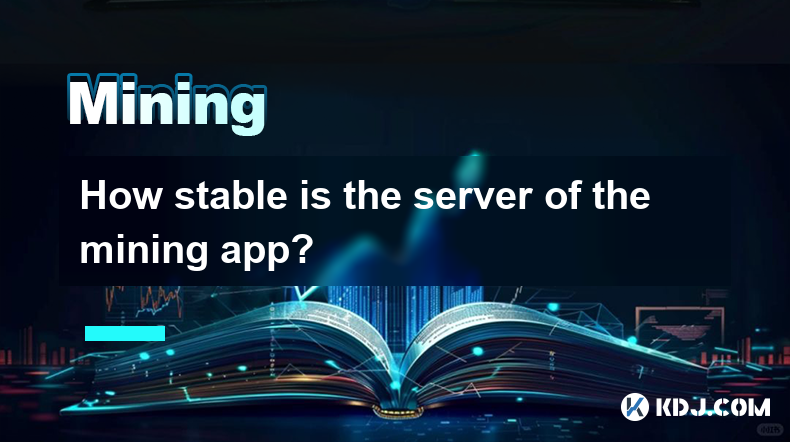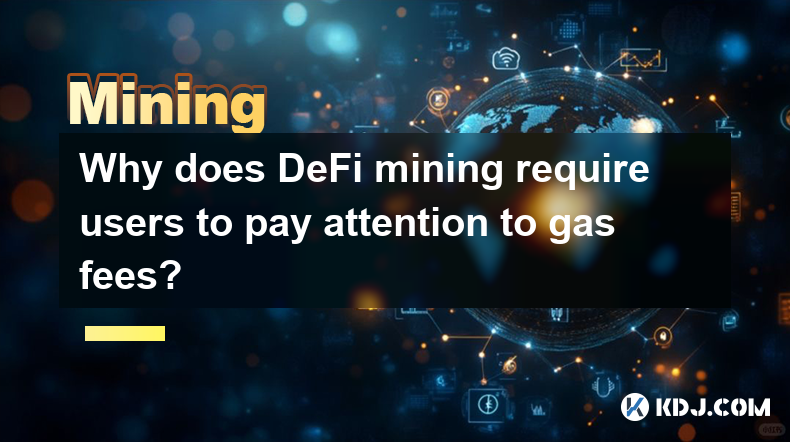-
 Bitcoin
Bitcoin $77,174.4332
-6.66% -
 Ethereum
Ethereum $1,513.9694
-15.12% -
 Tether USDt
Tether USDt $0.9994
0.00% -
 XRP
XRP $1.7976
-13.35% -
 BNB
BNB $546.9143
-6.92% -
 USDC
USDC $1.0000
0.01% -
 Solana
Solana $102.1830
-13.15% -
 TRON
TRON $0.2263
-5.32% -
 Dogecoin
Dogecoin $0.1407
-13.87% -
 Cardano
Cardano $0.5506
-13.28% -
 UNUS SED LEO
UNUS SED LEO $8.8923
-1.36% -
 Toncoin
Toncoin $3.0651
-6.63% -
 Chainlink
Chainlink $10.9654
-12.57% -
 Stellar
Stellar $0.2233
-10.13% -
 Avalanche
Avalanche $15.7971
-7.68% -
 Shiba Inu
Shiba Inu $0.0...01102
-8.27% -
 Sui
Sui $1.8598
-12.98% -
 MANTRA
MANTRA $6.1562
-1.39% -
 Hedera
Hedera $0.1389
-10.82% -
 Polkadot
Polkadot $3.4511
-12.05% -
 Dai
Dai $1.0001
0.02% -
 Bitcoin Cash
Bitcoin Cash $265.0446
-9.69% -
 Litecoin
Litecoin $68.1930
-15.63% -
 Ethena USDe
Ethena USDe $0.9987
-0.03% -
 Bitget Token
Bitget Token $3.9224
-11.37% -
 Pi
Pi $0.5642
-11.92% -
 Monero
Monero $195.3244
-8.26% -
 Hyperliquid
Hyperliquid $10.5437
-7.47% -
 Uniswap
Uniswap $4.9997
-12.42% -
 OKB
OKB $49.8749
-7.33%
How stable is the server of the mining app?
A stable mining app server ensures miners can connect reliably, handle peak loads, and maintain security, directly impacting mining efficiency and potential rewards.
Apr 06, 2025 at 03:15 am

The stability of a mining app's server is a critical factor for miners, as it directly affects their ability to mine cryptocurrencies effectively. A stable server ensures that miners can connect reliably, receive mining tasks promptly, and submit their solutions without interruptions. When evaluating the stability of a mining app's server, several key aspects need to be considered, including uptime, latency, scalability, and security. These factors collectively determine how well the server can handle the demands of mining operations, especially during peak times when network congestion is high.
Uptime and Reliability
Uptime is a primary indicator of server stability. A mining app with high uptime means that the server is almost always available for miners to connect and perform their tasks. Reliable uptime reduces the risk of miners losing potential rewards due to server downtime. To assess uptime, miners can look at historical data provided by the mining app or third-party monitoring services. Apps that consistently achieve uptime rates of 99.9% or higher are generally considered stable. However, even with high uptime, unexpected downtimes can still occur due to unforeseen issues like hardware failures or cyberattacks.
Latency and Performance
Latency refers to the time it takes for data to travel from the miner's device to the server and back. Low latency is crucial for mining apps because it affects the speed at which miners can receive new blocks and submit their solutions. High latency can lead to missed opportunities and reduced efficiency. Mining apps should ideally have servers located in multiple regions to minimize latency for users worldwide. Performance metrics such as response time and throughput also play a significant role. A stable server should be able to handle a high volume of requests without significant degradation in performance.
Scalability and Load Handling
Scalability is another vital aspect of server stability. As the number of users on a mining app grows, the server must be able to scale up to handle increased load without compromising performance. This involves not only having sufficient hardware resources but also implementing efficient load balancing and resource management strategies. A stable mining app should be able to manage peak loads during times of high network activity, such as when a new block is mined or during periods of high transaction volume. Miners should look for apps that have a track record of handling large-scale operations smoothly.
Security Measures
Security is paramount for mining app servers, as they are frequent targets for cyberattacks. A stable server must have robust security measures in place to protect against threats like DDoS attacks, hacking attempts, and data breaches. These measures include firewalls, intrusion detection systems, regular security audits, and encryption of data in transit and at rest. Additionally, the mining app should have a clear incident response plan to quickly address and mitigate any security breaches. Miners should verify that the app's developers are transparent about their security practices and have a good reputation in the industry.
User Experience and Support
The stability of a mining app's server also impacts user experience. A stable server should provide a seamless and reliable mining experience, with minimal disruptions and clear communication about any issues that arise. Good user support is essential for maintaining trust and satisfaction among miners. This includes responsive customer service, detailed documentation, and active community forums where miners can share experiences and solutions. Apps that prioritize user experience are more likely to maintain a stable server environment, as they are motivated to resolve issues quickly and efficiently.
Monitoring and Maintenance
Continuous monitoring and regular maintenance are crucial for maintaining server stability. Mining apps should have systems in place to monitor server performance in real-time, allowing them to detect and address issues before they impact users. Regular maintenance, including software updates and hardware upgrades, helps to keep the server running smoothly and securely. Miners should look for apps that are transparent about their maintenance schedules and have a proactive approach to server management. This ensures that the server remains stable even as the mining ecosystem evolves and grows.
Community Feedback and Reviews
Community feedback and reviews are valuable resources for assessing the stability of a mining app's server. Miners can gain insights into the real-world performance of the app by reading reviews and participating in community discussions. Positive feedback from a large number of users is a good indicator of server stability. Conversely, consistent reports of server issues or downtime can signal potential problems. Miners should also consider the responsiveness of the app's developers to user feedback, as this reflects their commitment to maintaining a stable and reliable service.
Comparison with Competitors
Comparing the server stability of different mining apps can provide a clearer picture of their relative performance. Miners should look at metrics such as uptime, latency, and user reviews across multiple apps to make an informed decision. Some apps may excel in certain areas, such as having lower latency or higher uptime, while others may offer better security or scalability. By comparing these factors, miners can choose an app that best meets their needs and offers the most stable mining experience.
Impact of Server Stability on Mining Efficiency
Server stability directly impacts mining efficiency. A stable server ensures that miners can maximize their hash rate and minimize downtime, leading to higher potential rewards. Conversely, an unstable server can result in lost mining opportunities and reduced profitability. Miners should consider how server stability affects their overall mining strategy and choose an app that aligns with their goals. For instance, miners focused on maximizing efficiency may prioritize apps with the highest uptime and lowest latency, while those concerned about security may choose apps with robust security measures.
Technical Infrastructure
The technical infrastructure supporting a mining app's server plays a significant role in its stability. This includes the choice of cloud providers, server hardware, and network infrastructure. Apps that use reputable cloud services and have a distributed network of servers are generally more stable. Additionally, the use of advanced technologies like content delivery networks (CDNs) and edge computing can further enhance server stability by reducing latency and improving load handling. Miners should research the technical infrastructure of different mining apps to understand how it contributes to overall server stability.
Regulatory Compliance
Regulatory compliance is another factor that can impact server stability. Mining apps must adhere to various regulations related to data protection, financial transactions, and cybersecurity. Compliance with these regulations can affect how the server is managed and secured. For instance, apps that comply with GDPR may have stricter data handling practices, which can enhance server stability by reducing the risk of data breaches. Miners should consider the regulatory environment in which the app operates and how it influences server stability.
Future-Proofing and Innovation
Finally, the ability of a mining app to future-proof its server and innovate is crucial for long-term stability. As the cryptocurrency ecosystem evolves, mining apps must adapt to new technologies and mining algorithms. This includes upgrading server infrastructure to support new mining protocols and improving scalability to handle future growth. Miners should look for apps that demonstrate a commitment to innovation and have a clear roadmap for future development. This ensures that the server remains stable and capable of meeting the evolving needs of miners.
Common Questions and Answers
What is server uptime and why is it important for mining apps?
Server uptime refers to the amount of time the server is operational and available for use. For mining apps, high uptime is crucial because it ensures that miners can connect and mine without interruptions, maximizing their potential rewards.How does latency affect mining efficiency?
Latency affects mining efficiency by determining how quickly miners can receive new blocks and submit their solutions. High latency can lead to missed opportunities and reduced efficiency, while low latency enhances mining performance.What are some signs of a stable mining app server?
Signs of a stable mining app server include high uptime, low latency, positive user reviews, robust security measures, and the ability to handle peak loads without performance degradation.How can miners assess the scalability of a mining app's server?
Miners can assess scalability by looking at the app's historical performance during peak times, the use of load balancing and resource management strategies, and the app's ability to handle increased user numbers without issues.Why is security important for mining app servers?
Security is important for mining app servers because they are frequent targets for cyberattacks. Robust security measures protect against threats like DDoS attacks and data breaches, ensuring that the server remains stable and secure for miners.What role does user experience play in server stability?
User experience is closely tied to server stability, as a stable server provides a seamless and reliable mining experience. Good user support and clear communication about any issues also contribute to overall stability.How can continuous monitoring and maintenance improve server stability?
Continuous monitoring and regular maintenance help detect and address issues before they impact users, keeping the server running smoothly and securely. This proactive approach is essential for maintaining long-term stability.Why is community feedback important for assessing server stability?
Community feedback provides real-world insights into the performance of a mining app's server. Positive feedback from a large number of users indicates stability, while consistent reports of issues can signal potential problems.How does the technical infrastructure impact server stability?
The technical infrastructure, including cloud providers, server hardware, and network infrastructure, directly affects server stability. Apps with robust and distributed infrastructure are generally more stable and capable of handling high loads.What role does regulatory compliance play in server stability?
Regulatory compliance can impact server stability by influencing data handling practices and cybersecurity measures. Compliance with regulations like GDPR can enhance stability by reducing the risk of data breaches and ensuring secure operations.
Disclaimer:info@kdj.com
The information provided is not trading advice. kdj.com does not assume any responsibility for any investments made based on the information provided in this article. Cryptocurrencies are highly volatile and it is highly recommended that you invest with caution after thorough research!
If you believe that the content used on this website infringes your copyright, please contact us immediately (info@kdj.com) and we will delete it promptly.
- Ethereum and Solana Prices Collapsed Monday Morning as President Trump's Sweeping New Tariffs Sparked a Global Market Selloff
- 2025-04-07 20:35:12
- GameStop Corp. (NYSE: GME) Announces Bitcoin Purchase Plans, Sparking Stock Rally
- 2025-04-07 20:35:12
- New Plan to Stabilize Pi Coin Price Gains Attention
- 2025-04-07 20:30:11
- Who hasn't dreamed of finding the next 1000x crypto? Imagine turning a small investment into a huge fortune overnight.
- 2025-04-07 20:30:11
- U.S. President Donald Trump’s sweeping reciprocal tariffs have triggered fresh panic across global financial markets.
- 2025-04-07 20:25:12
- Solana (SOL) Plunges Below $100, Memecoin Mania Cools
- 2025-04-07 20:25:12
Related knowledge

How strong is the community support for CPU mining currencies?
Apr 07,2025 at 12:28pm
The strength of community support for CPU mining currencies is a critical aspect that influences their longevity and success in the cryptocurrency market. CPU mining, which involves using a computer's central processing unit to mine cryptocurrencies, has seen a resurgence in interest due to its accessibility and the rise of privacy-focused and eco-frien...

What does "double mining" mean in graphics card mining?
Apr 04,2025 at 08:35pm
In the world of cryptocurrency, the term 'double mining' refers to a specific technique used in graphics card mining to maximize the efficiency and profitability of mining operations. This method involves simultaneously mining two different cryptocurrencies using the same graphics card. The concept of double mining has gained popularity among miners who...

Why does DeFi mining require users to pay attention to gas fees?
Apr 05,2025 at 10:28am
DeFi mining has become a popular way for users to earn passive income in the cryptocurrency space. However, one aspect that users must pay close attention to is gas fees. Gas fees are transaction fees on the Ethereum network, and they play a crucial role in the DeFi mining process. Understanding why gas fees are important and how they affect DeFi mining...

What is the market prospect of CPU mining currency?
Apr 04,2025 at 09:14am
The concept of CPU mining currency has gained traction in the cryptocurrency community due to its accessibility and potential for decentralization. Unlike GPU or ASIC mining, which often requires significant investment in specialized hardware, CPU mining can be performed using standard computer processors. This makes it an attractive option for individu...

What are the recommendations for mining software for CPU mining currency?
Apr 05,2025 at 05:49pm
CPU mining, while less efficient than GPU or ASIC mining, can still be a viable option for mining certain cryptocurrencies. This article will explore the best software options available for CPU mining, providing detailed recommendations and insights into their features and performance. Understanding CPU MiningCPU mining involves using a computer's centr...

How to ensure data security during mining?
Apr 05,2025 at 08:28am
Ensuring data security during mining is crucial, as miners handle sensitive information and perform transactions that need to be protected against unauthorized access and cyber threats. This article will delve into various strategies and best practices to secure data during the mining process, focusing on the cryptocurrency sphere. Understanding the Ris...

How strong is the community support for CPU mining currencies?
Apr 07,2025 at 12:28pm
The strength of community support for CPU mining currencies is a critical aspect that influences their longevity and success in the cryptocurrency market. CPU mining, which involves using a computer's central processing unit to mine cryptocurrencies, has seen a resurgence in interest due to its accessibility and the rise of privacy-focused and eco-frien...

What does "double mining" mean in graphics card mining?
Apr 04,2025 at 08:35pm
In the world of cryptocurrency, the term 'double mining' refers to a specific technique used in graphics card mining to maximize the efficiency and profitability of mining operations. This method involves simultaneously mining two different cryptocurrencies using the same graphics card. The concept of double mining has gained popularity among miners who...

Why does DeFi mining require users to pay attention to gas fees?
Apr 05,2025 at 10:28am
DeFi mining has become a popular way for users to earn passive income in the cryptocurrency space. However, one aspect that users must pay close attention to is gas fees. Gas fees are transaction fees on the Ethereum network, and they play a crucial role in the DeFi mining process. Understanding why gas fees are important and how they affect DeFi mining...

What is the market prospect of CPU mining currency?
Apr 04,2025 at 09:14am
The concept of CPU mining currency has gained traction in the cryptocurrency community due to its accessibility and potential for decentralization. Unlike GPU or ASIC mining, which often requires significant investment in specialized hardware, CPU mining can be performed using standard computer processors. This makes it an attractive option for individu...

What are the recommendations for mining software for CPU mining currency?
Apr 05,2025 at 05:49pm
CPU mining, while less efficient than GPU or ASIC mining, can still be a viable option for mining certain cryptocurrencies. This article will explore the best software options available for CPU mining, providing detailed recommendations and insights into their features and performance. Understanding CPU MiningCPU mining involves using a computer's centr...

How to ensure data security during mining?
Apr 05,2025 at 08:28am
Ensuring data security during mining is crucial, as miners handle sensitive information and perform transactions that need to be protected against unauthorized access and cyber threats. This article will delve into various strategies and best practices to secure data during the mining process, focusing on the cryptocurrency sphere. Understanding the Ris...
See all articles





















































































